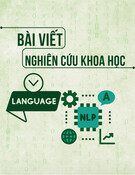
P-ISSN 1859-3585 E-ISSN 2615-9619 https://jst-haui.vn LANGUAGE - CULTURE Vol. 60 - No. 10 (Oct 2024) HaUI Journal of Science and Technology
61
OBSTACLES IN USING MASS MEDIA FOR SELF-STUDYING ENGLISH LISTENING COMPREHENSION FOR NON-MAJOR SECOND-YEAR VIETNAMESE UNIVERSITY STUDENTS
NHỮNG KHÓ KHĂN KHI SỬ DỤNG PHƯƠNG TIỆN TRUYỀN THÔNG TRONG VIỆC TỰ HỌC KỸ NĂNG NGHE TIẾNG ANH CHO SINH VIÊN NĂM HAI KHÔNG CHUYÊN Tuong Thi Phuong Lien1,*, Vo Mai Do Quyen 2, Do Thi Hanh2 DOI: http://doi.org/10.57001/huih5804.2024.325 ABSTRACT In the current technological age, mass media have become essential tools that support educational efforts both within and outside traditional classroomenvironments. Teachers worldwide are integrating technology into their teaching listening comprehension to deliver lesson content effectively. However, non-native English learners seeking to enhance their self-study skills outside the classroom often experience a deficiency in exposure to mass
media. This study was
conducted to investigate the role of mass media in enhancing self-study
of English listening comprehension and suggest ways to improve listening
comprehension. The research utilizes quantitative methods to analyze the results, focusing on promoting collaboration and fostering learners’ autonomythrough the utilization of mass media as language learning tools. The findings will examine the obstacles of using mass media for self-
studying English listening
comprehension as supportive tools for non-native English learners outside the classroom context. Furthermore, the authors propose some recommendations
for
using the media in improving listening comprehension. Keywords: Non-native English learners; mass media; self-study; obstacles; listening comprehension. TÓM TẮT Trong thời đại công nghệ hiện nay, phương tiện truyền thông đại chúng đã trở thành những công cụ thiết yếu hỗ trợ nỗ lực giáo dục cả
trong và ngoài môi
trường lớp học truyền thống. Giáo viên đang ứng dụng công nghệ vào việc giảng dạy kỹ năng nghe để truyền đạt nội dung bài học một cách hiệu quả
. Tuy nhiên,
những người học tiếng Anh không phải là bản ngữ muốn cải thiện kỹ năng tự học bên ngoài lớp học thường gặp phải khó khăn trong việc tiếp xúc với phươngtiện truyền thông đại chúng. Nghiên cứu này được thực hiện nhằm điều tra vai trò của phương tiện truyền thông đại chúng trong việc nâng cao khả năng t
ự
học kỹ năng nghe tiếng Anh và đưa ra các cách cải thiện kỹ năng nghe. Nghiên cứu đã sử dụng phương pháp định lượng để phân tích kết quả, tập trung vào việ
c
thúc đẩy sự hợp tác và phát triển tính tự chủ của người học thông qua việc sử dụng phương tiện truyền thông như là công cụ học ngôn ngữ. Kết quả của nghiêncứu chỉ ra những trở ngại trong việc sử dụng phương tiện truyền thông của người học tiếng Anh không chuyên trong việc tự học kỹ năng nghe. Bên cạ
nh đó,
nhóm tác giả đưa ra một số giải pháp để sử dụng phương tiện truyền thông một cách hiệu quả trong việc cải thiện kỹ năng nghe. Từ khóa: Người học tiếng Anh không chuyên; phương tiện truyền thông đại chúng; tự học tiếng Anh; khó khăn; kỹ năng nghe hiểu. 1Faculty of Tourism Management and International Languages, Hanoi University of Culture, Vietnam 2School of Languages and Tourism, Hanoi University of Industry, Vietnam *Email: lienttp@huc.edu.vn Received: 09/9/2024 Revised: 23/10/2024 Accepted: 28/10/2024

VĂN HÓA https://jst-haui.vn Tạp chí Khoa học và Công nghệ Trường Đại học Công nghiệp Hà Nội Tập 60 - Số 10 (10/2024)
62
NGÔN NG
Ữ
P
-
ISSN 1859
-
3585
E
-
ISSN 2615
-
961
9
1. INTRODUCTION It can be seen that English has emerged as a global language, becoming the primary medium of communication in international business, education, and diplomacy. As the most widely spoken second language in the world, it is essential to have proficiency in English for academic and professional success. Among the four fundamental language skills, listening comprehension plays a crucial role in effective communication. [2] stated that the role of listening comprehension is to understand natural conversations spoken by native speakers at a normal pace in spontaneous situations. Thus, the awareness and attention of students to sounds or speech patterns are developed through the process of identification. It is challenging for the students to keep their attention to what they are listening to and comprehend the meaning at the same time. This means that students encounter difficulties in fully grasping the listening comprehension tasks. Although these non-major students have studied English as their major, including listening courses, they may recognize individual words but still face various challenges with their listening abilities. As a result, they struggle to comprehend the overall meaning of spoken language. It is, therefore, crucial to identify the issues they encounter and understand the causes behind them. Thus, there are a variety of approaches that can be taken to improve learners’ self-study of listening comprehension. Mass media can solve these problems and Mass media is widely regarded as one of the most popular and effective methods of communication. Using media is necessary to help students enhance their listening comprehension [6]. Moreover, Tafani [16] identified mass media as encompassing various forms, such as newspapers, radio, television, the Internet, and magazines. Additionally, Smaldino, Lowther, and Russell categorized media into six specific types: text-based media, audio media, visual media, video, manipulative media, and human resources. Mass media provides students with opportunities to engage in a wide range of self-learning activities through various forms, such as magazines, radio, and the Internet. This exposure significantly contributes to the development of their English language skills [16]. Although mass media and resources adapted for language learning are increasingly accessible, non-native English learners often lack adequate exposure to these tools for independent study beyond the classroom. This gap may impede their progress in improving language proficiency on their own. While existing research largely addresses the use of mass media in classroom environments, there is a notable scarcity of studies that examine their role in supporting self-directed English listening comprehension learning, especially among non- native speakers in Vietnamese universities. This research addresses this gap by exploring the application of mass media for self-study in English listening comprehension learning, offering valuable insights into this relatively unexplored area. This study aims to investigate the obstacles in using mass media to improve self-study English listening comprehension as a foreign language among non-native students at a university in Vietnam. The research aims to answer the following questions: 1. What challenges do learners face when using mass media for self-studying English listening comprehension? 2. What solutions should be used when using mass media to improve their listening comprehension? 2. MATERIALS AND METHODS 2.1. Students’ self-study in English listening comprehension Listening is considered one of the most essential yet challenging skills in English language acquisition. It requires learners to perform a variety of tasks, such as distinguishing between different sounds and comprehending stress and intonation patterns. Besides, listening comprehension involves complex mental processes to extract meaning and intent from spoken messages. Sebina and Arua [14] highlight that listening is particularly difficult for English learners, including those in Batswana, and emphasize its significant impact on cognitive development. Moreover, listening serves as a foundational skill for mastering other language skills, such as speaking, reading, and writing, making it indispensable for learners [20]. However, learners often face additional challenges, such as coping with rapid speech, which further complicates their listening comprehension [11]. Listening can be categorized into two types: intensive listening and extensive listening. Intensive listening (IL) focuses on the precise identification of elements such as pronunciation, vocabulary, and grammatical structures. This method is commonly employed by teachers in classroom activities, including gap-filling exercises and dictation tasks [1]. In IL, learners are encouraged to listen to the same passage repeatedly to deepen their understanding of specific language features. In contrast, extensive listening aims to expose

P-ISSN 1859-3585 E-ISSN 2615-9619 https://jst-haui.vn LANGUAGE - CULTURE Vol. 60 - No. 10 (Oct 2024) HaUI Journal of Science and Technology
63
learners to a broader range of comprehensible and engaging audio input, fostering overall listening fluency and comprehension skills. Wach [21] in his study emphasized that technology-based self-study resources develop students' phonological awareness, strategy usage, and affective commitment in pronunciation learning. In his study, Gamba Buitrago [4] highlights that self-study facilitates personal reflection, allowing learners to identify their strengths and weaknesses, thereby fostering autonomous development. Furthermore, Koesoemah [5] emphasizes that self-recorded videos contribute to the improvement of various aspects of speaking skills, including pronunciation, vocabulary, grammar, and fluency. These tools enable learners to critically evaluate their performance and enhance their linguistic competence independently. 2.2. Mass media in language learning 2.2.1. Use of mass media in language learning Mass media encompasses advancements in science and technology designed to communicate with a large audience. Common mass media platforms include newspapers, magazines, radio, television, and the Internet. The public often depends on these platforms for information on political matters, social issues, entertainment, and news [15]. According to Biagi [3], there are eight primary types of media: books, newspapers, magazines, recordings, radio, movies, television, and the Internet. 2.2.2. Benefits of mass media in learning and teaching English listening comprehension Mass media plays a vital role in learning English listening skills because it provides possible and featuring. It plays a significant role in facilitating the acquisition of English language skills by offering adult learners numerous opportunities to enhance their listening, speaking, reading, and writing abilities. Through exposure to new texts and phrases on social platforms, learners can expand their communicative vocabulary. The usage of mass media among learners has notably increased, surpassing traditional resources such as books and written materials for English learning. Various social media tools provide learners with access to diverse language resources, enabling them to improve both vocabulary and oral communication skills. For instance, learners can create or join English language learner (ELL) groups on platforms like Facebook to engage in regular discussions and practice conversational English. Additionally, following organizations and educators who share language learning resources help learners access targeted content. Platforms such as YouTube also offer comprehensive language learning opportunities, supporting the development of pronunciation, listening, speaking, writing, grammar, and syntax skills. Yanar & Tutunis noted that mass media materials are accessible to learners and are practical for those who are uninterested in classroom activities or studying remotely from campus. They highlighted that media resources provide an easier, faster, and more effective means to enhance listening and speaking skills. Tafani [16] emphasized that mass media plays an important role in developing English skills, particularly listening skills. Michelle [10] further explored this by testing various types of mass media on students’ listening abilities, finding that students had a strong preference for these sources, which greatly boosted their listening and other language skills. Ramani [13] highlighted that activities built around mass media foster listening skills and encourage students to share ideas, and enhance critical thinking. The Internet, a platform comprising various media resources, is considered a powerful tool for learning. Truong & Le [17] affirmed that YouTube helps students improve their listening skills through gaining new vocabulary and grammar knowledge. They pointed out features like repetition cues, allowing students to listen repeatedly until they fully grasp the content. Moreover, Van, Dang, Pham, Vo, & Pham [18] stated that educational apps, smartphones and tablets play an important role in helping students with easier access to listening resources, significantly improving their listening comprehension skills. The integration of multimedia has proven to be highly effective in enhancing students' listening skills. Technology-based instructional materials offer greater accessibility for educators, facilitating more efficient teaching and learning processes [7, 8]. Research has demonstrated that these materials yield superior results compared to traditional textbook-based approaches, significantly boosting student motivation and engagement. The use of technology not only enhances learning outcomes but also fosters a more interactive and dynamic educational environment. It can be seen that mass media provides students with diverse opportunities to engage in various learning activities through different types, for instance, magazines, radio, and the Internet. These research papers significantly contribute to the enhancement of students' English language proficiency.

VĂN HÓA https://jst-haui.vn Tạp chí Khoa học và Công nghệ Trường Đại học Công nghiệp Hà Nội Tập 60 - Số 10 (10/2024)
64
NGÔN NG
Ữ
P
-
ISSN 1859
-
3585
E
-
ISSN 2615
-
961
9
2.3. Previous studies Media is regarded as playing a crucial role in listening comprehension. Therefore, the researcher sought to conduct a survey to gather information on the obstacles of media in self-study, specifically in aiding students' understanding of listening comprehension materials. Megawati [9] conducted a survey-based quantitative study examining teachers' media selection, the practical challenges they face, and students' attitudes toward media use in language instruction. The results indicated that 85% of students appreciated the integration of instructional media, while 95% perceived it as beneficial for understanding the material, underlining the positive reception and perceived efficacy of media in enhancing comprehension. Similarly, Prastiyowati [12] employed a qualitative research approach in the field of language pedagogy to identify specific obstacles students face and strategies they use in listening comprehension. Using interviews and thematic analysis, the study classified findings into four categories: students’ proficiency levels, opinions on listening activities, interest in the subject, and overall engagement. These categories provided a structured understanding of the challenges students encounter, offering a foundation for tailored instructional approaches. In a separate study, Vo and Cao [19] adopted a quantitative research design in applied linguistics to examine the importance of vocabulary and pronunciation within English listening comprehension, specifically in self-study settings through mass media. Their findings emphasized that vocabulary acquisition and pronunciation practice were pivotal in students' self-directed listening improvement. The study suggested that prioritizing these linguistic elements could significantly benefit students in self-study, advocating for instructional emphasis on these areas. 2.4. Methods 2.4.1. Research design To investigate the obstacles in using mass media for improving self-study English listening comprehension among non-native students at a university in Vietnam. This study adopts a quantitative research approach. The questionnaire was developed as the primary instrument for this study, comprising twelve statements organized correlatively in both English and Vietnamese. The questionnaire was sent to students via Zalo application. Then the raw data obtained were analyzed using Excel statistical software. The survey data was converted into numerical form, which was subsequently organized and presented as charts and graphs for comprehensive analysis and discussion, which served as the foundation for interpreting the research findings. 2.4.2. Participants This study involved 168 non-English-major students from various programs at Engineering, Science and other Departments at Hanoi University of Industry and carried out in three weeks. The participants were chosen using a random sampling technique to get the data of the media that helped the students in listening comprehension materials. 2.4.3. Data Collection A quantitative approach was employed to collect data from the survey with twelve questions to gather data on the participants’ use of mass media in self-studying English listening comprehension. The questionnaire included sections on demographic information, frequency of mass media usage, types of language learning applications and resources used, and challenges when using these tools. To ensure accessibility and encourage candidates’ responses, the questionnaire was administered online. The survey was created using Google Forms and distributed via Zalo to each class group, with the assistance of the teaching staff, to gather data on students' reflections and evaluations regarding the use of mass media for learning. 3. RESULTS AND DISCUSSION 3.1. Demographic information 3.1.1. Participants’ gender The data shows that 92 participants (54.76%) among 168 identified as female and 76 (45.24%) as male. No respondents selected "other" as their gender identity. This indicates a slightly higher representation of females in the sample of the study. 3.1.2. Participants’ major The academic major of the sample shows that the respondents mainly studied Engineering, with 128 participants. Science was the second most popular with 24 participants, while Tourism, Hospitality, and Business had no respondents. Additionally, 16 respondents indicated "other" as their major. The dominance of engineering students implies that the findings are likely to be influenced by the experiences and perspectives of engineering students, with limited input from non-STEM fields.

P-ISSN 1859-3585 E-ISSN 2615-9619 https://jst-haui.vn LANGUAGE - CULTURE Vol. 60 - No. 10 (Oct 2024) HaUI Journal of Science and Technology
65
3.2. Mass media usage for self-studying on English listening skills 3.2.1. Frequency of using mass media for self-studying English listening skills The data indicates that a large number of participants (96) engage with mass media for self-studying listening skills occasionally, while only a small portion (20 respondents) use it daily. Moreover, 30 respondents use mass media several times a week, and 22 of them use it weekly. This suggests that mass media is infrequently used among the sample, with occasional usage being the most common. This information could imply studies that focused on the influence of media, since the frequency of exposure may affect the impact of media on learners’ self-studying listening skills. 3.2.2. Mass media types for self-studying English listening skills The data reveals a clear preference among users for certain types of mass media and resources when it comes to self-study English listening comprehension. The Internet is the most widely used, with 162 respondents relying on this tool. This high usage likely reflects the immediate utility and ease of access this app provides, allowing users to quickly look up words and phrases in real-time, making them indispensable in everyday language learning scenarios. Secondly, television was used by 18 participants, while radio had very limited use, with only 2 respondents. Furthermore, 8 participants indicated using other forms of media. This high usage of the Internet likely reflects that it is the primary tool for developing listening skills, due to its accessibility, variety of content, and flexibility. The low use of traditional media like radio and television may reflect a shift towards digital platforms for educational purposes. 3.3. The problems students have faced with self-studying listening skills 3.3.1. Learners’ English listening comprehension levels The data on learner’s ability to understand spoken English indicates that a large number of respondents (96) can understand simple words and sentences, while 54 individuals encounter great challenges in understanding English. Only a small portion (12) reported that they could understand the main ideas in most conversations, and fewer participants (4) stated they could understand most things spoken by a native English speaker. Only 2 learners indicated they could follow native speakers when they were speaking quickly and using slang. This suggests that most respondents are at a basic or intermediate level of English listening comprehension. These findings highlight the need for support so that it can help learners advance above basic comprehension levels. 3.3.2. Common obstacles in self-studying listening comprehension The data on difficulties faced in self-studying English listening skills reveals that the most common challenge is that spoken texts happen instantly and very fast, as noted by 144 students. Other issues include obstacles with similar sounds in speech (58 respondents). Repeats and redundancy (44 participants) and strange accents (46 students) were noted as the second most popular obstacles. Next, the presence of hesitations, false starts, and incomplete forms in spoken texts (42 participants) and complex syntax and vocabulary (42 respondents) went after as the third ones. Fewer respondents chose challenges such as stress on keywords and intonation (40 respondents), and informal language use (22 learners). These findings imply that fast speech and irregularities in spoken language are key fields where learners struggle, highlighting the demand for strategies addressing these difficulties in listening comprehension. 3.3.3. Challenges in understanding informal English It is indicated that the majority of students (86) have difficulties with non-standard or informal English when listening, particularly because of dialects, slang, and colloquialisms. Not being used to listening to informal English was voted the second most common problem by 72 participants, suggesting a lack of exposure is an important barrier. Only 24 respondents indicated that they do not have any problems with informal English. These findings suggest that for many learners, understanding informal English is challenging due to its variability and unfamiliarity, indicating the requirement for more practice with non-standard, everyday speech in listening activities. 3.3.4. Challenges in understanding formal English The most common problem encountered when listening to formal English is a lack of background knowledge about the topic, as reported by 104 students. Secondly, 64 participants indicated that cultural differences between their own countries and English-speaking countries often lead to misunderstanding the message. Other challenges include difficulties in recognizing the topic (46 respondents) and relating background knowledge to the topic (40 participants). These findings suggest that a lack of familiarity with the content and cultural differences typically prevent learners from comprehending formal English. Addressing these gaps by




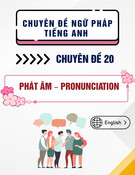






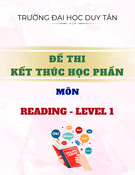
![Đề cương môn Tiếng Anh 1 [Chuẩn Nhất/Mới Nhất]](https://cdn.tailieu.vn/images/document/thumbnail/2025/20251130/cubabep141@gmail.com/135x160/51711764555685.jpg)


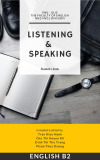





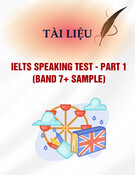

![Mẫu thư Tiếng Anh: Tài liệu [Mô tả chi tiết hơn về loại tài liệu hoặc mục đích sử dụng]](https://cdn.tailieu.vn/images/document/thumbnail/2025/20250814/vinhsannguyenphuc@gmail.com/135x160/71321755225259.jpg)
